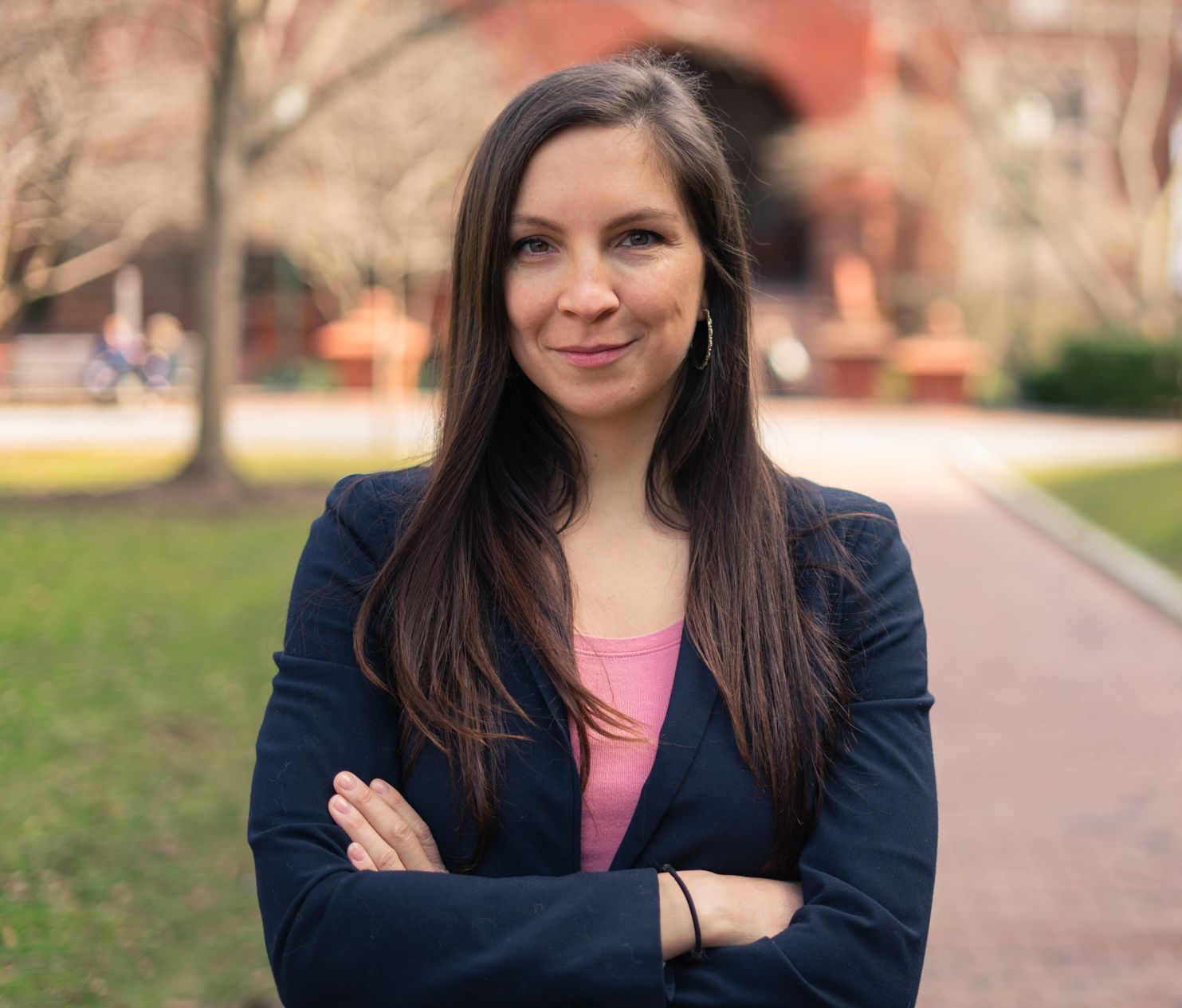There’s a lot to consider when it comes to going to law school, from acceptance rates to bar passage rates.
If you’re curious about the best law school admission statistics, you’ve come to the right place.
Ready? Let’s go!
Top law school admissions statistics in 2025
- The median law school acceptance rate is 41%
- The top 15 US law schools have an average acceptance rate of 12.6%
- On average, entering law school students have a median GPA of 3.55
- 38,019 JD students enrolled in law school in 2022
- The three hardest law schools to get into are Yale Law School, Stanford Law School, and Harvard Law School
- The three easiest law schools to get into are Southern University Law Center, Western Michigan University Thomas M. Cooley Law School, and Texas Southern University Thurgood Marshall School of Law
The median law school acceptance rate
Before we jump in, let’s talk about what percentage of applicants get into law school.
Across the country, the median law school acceptance rate is 41%. Some schools even have acceptance rates of 65% or more.
But the top 15 law schools – including Stanford and Yale – are far harder to get into, with an average acceptance rate of 12.6%.
Keep reading to learn more about 2023 acceptance rates.
Law school acceptance rates in 2023
Here are the rankings for the top 50 law schools in the United States:
| University | Accept. rate | Median LSAT | Low LSAT | High LSAT | Median GPA | Low GPA | High GPA | Tuition | Students receiving grants | Employment 10 months after graduation |
| Stanford University | 6.9% | 173 | 170 | 176 | 3.92 | 3.84 | 3.99 | $71,609 | 65% | 87% |
| Yale University | 5.7% | 178 | 171 | 175 | 3.94 | 3.87 | 3.99 | $71,425 | 64% | 79.8% |
| University of Chicago | 14.2% | 173 | 169 | 175 | 3.91 | 3.81 | 3.97 | $74,607 | 80% | 95.3% |
| University of Pennsylvania (Carey) | 9.7% | 172 | 167 | 173 | 3.9 | 3.61 | 3.96 | $73,008 | 55% | 93% |
| Duke University | 10.7% | 170 | 168 | 171 | 3.85 | 3.73 | 3.94 | $72,632 | 94% | 96.8% |
| Harvard University | 10.1% | 174 | 170 | 176 | 3.92 | 3.82 | 3.99 | $71,734 | 43% | 88% |
| New York University | 15.7% | 172 | 169 | 174 | 3.88 | 3.72 | 3.94 | $76,290 | 59% | 93.3% |
| Columbia University | 11.9% | 173 | 171 | 175 | 3.87 | 3.78 | 3.95 | $78,278 | 65% | 96.3% |
| University of Virginia | 12.9% | 171 | 166 | 173 | 3.94 | 3.69 | 3.99 | $68,500 | 68% | 93.4% |
| Northwestern University (Pritzker) | 15% | 171 | 166 | 172 | 3.89 | 3.63 | 3.93 | $72,212 | 71% | 94.1% |
| University of California (Berkeley) | 12.5% | 170 | 167 | 172 | 3.83 | 3.74 | 3.9 | $59,306 | 86% | 90.2% |
| University of Michigan (Ann Arbor) | 13.5% | 171 | 166 | 172 | 3.83 | 3.59 | 3.92 | $66,808 | 85% | 93.1% |
| Cornell University | 17.4% | 172 | 170 | 174 | 3.87 | 3.76 | 3.94 | $74,183 | 86% | 94.3% |
| University of California –Los Angeles | 15.5% | 171 | 166 | 172 | 3.9 | 3.76 | 3.97 | $53,910 | 85% | 91.5% |
| Georgetown University | 17.6% | 171 | 166 | 172 | 3.86 | 3.63 | 3.94 | $71,996 | 64% | 89.7% |
| University of Minnesota | 37.2% | 168 | N/A | N/A | 3.83 | N/A | N/A | $47,454 | 85.5% | 92% |
| University of Southern California (Gould) | 12.7% | 168 | 165 | 169 | 3.87 | 3.76 | 3.94 | $73,998 | 96.4% | 95.3% |
| University of Texas – Austin | 14.6% | 170 | 166 | 171 | 3.84 | 3.71 | 3.92 | $36,429 | 92.6% | 92% |
| Vanderbilt University | 14.5% | 170 | 163 | 170 | 3.9 | 3.57 | 3.98 | $68,816 | 85% | 92.7% |
| University of Georgia | 14.8% | 168 | 156 | 169 | 3.87 | 3.56 | 3.94 | $18,994 | 87% | 97% |
| Washington University in St. Louis | 18% | 172 | 164 | 173 | 3.94 | 3.43 | 4 | $65,229 | 95.4% | 94.6% |
| Brigham Young University (Clark) | 31.4% | 168 | 165 | 171 | 3.92 | 3,66 | 3.96 | $14,636 | 89% | 85.7% |
| Ohio State University (Mortiz) | 37.1% | 164 | 159 | 166 | 3.86 | 3.58 | 3.95 | $33,361 | 95.7% | 94.4% |
| University of Florida (Levin) | 16.9% | 169 | 162 | 170 | 3.9 | 3.52 | 3.97 | $21,803 | 81.5% | 90.7% |
| University of North California – Chapel Hill | 14.6% | 166 | 162 | 167 | 3.77 | 3.61 | 3.88 | $24,492 | 82.9% | 94.7% |
| Wake Forest University | 33% | 165 | 159 | 166 | 3.72 | 3.47 | 3.84 | $51,000 | 93.3% | 96.5% |
| Boston University | 16.3% | 170 | 164 | 171 | 3.84 | 3.57 | 3.91 | $62,534 | 88.1% | 88.3% |
| University of Notre Dame | 24.6% | 168 | 162 | 170 | 3.81 | 3.65 | 3.89 | $65,936 | 93.3% | 87% |
| Boston College | 10.2% | 166 | 162 | 167 | 3.74 | 3.55 | 3.81 | $63,130 | 91.9% | 91.2% |
| Fordham University | 18.8% | 167 | 164 | 168 | 3.72 | 3.55 | 3.81 | $96,166 | 85% | 94.1% |
| Texas A&M University | 16.3% | 164 | 158 | 166 | 3.93 | 3.54 | 3.98 | $32,634 | 86.3% | 94.7% |
| Arizona State University (O’Connor) | 19.7% | 167 | 158 | 168 | 3.85 | 3.42 | 3.94 | $27,464 | 94.1% | 94.6% |
| George Mason University (Scalia) | 19.6% | 166 | 158 | 167 | 3.83 | 3.45 | 3.93 | $26,569 | 83.2% | 90.7% |
| University of Utah (Quinney) | 31.9% | 163 | 158 | 164 | 3.87 | 3.71 | 3.96 | $33,634 | 78.8% | 92% |
| Emory University | 26% | 168 | 161 | 169 | 3.8 | 3.43 | 3.9 | $64,300 | 94.9% | 88.9% |
| George Washington University | 25% | 168 | 162 | 169 | 3.84 | 3.52 | 3.93 | $67,380 | 80.8% | 89.5% |
| University of Alabama | 25.8% | 166 | 159 | 168 | 3.95 | 3.4 | 4 | $24,390 | 89.8% | 89.1% |
| University of California – Irvine | 19.5% | 167 | 162 | 168 | 3.72 | 3.51 | 3.83 | $54,183 | 98% | 81.5% |
| University of Iowa | 41.3% | 163 | 161 | 165 | 3.66 | 3.49 | 3.83 | $30,152 | 82.4% | 92.7% |
| University of Kansas | 55.3% | 158 | 153 | 160 | 3.73 | 3.41 | 3.85 | $22,769 | 86.7% | 95.9% |
| University of Wisconsin – Madison | 35.2% | 165 | 157 | 167 | 3.73 | 3.41 | 3.85 | $33,158 | 91% | 89.7% |
| Washington and Lee University | 32.7% | 164 | 159 | 166 | 3.66 | 3.47 | 3.78 | $54,460 | 96.3% | 89.8% |
| University of Illinois Urbana-Champaign | 34.7% | 166 | 162 | 167 | 3.71 | 3.47 | 3.86 | $39,800 | 97.6% | 90.2% |
| Villanova University (Widger) | 16.5% | 163 | N/A | N/A | 3.76 | N/A | N/A | $53,555 | 85.7% | 93.7% |
| Indiana University – Bloomington (Maurer) | 43.3% | 164 | 158 | 165 | 3.81 | 3.42 | 3.92 | $38,185 | 98% | 89.4% |
| Pepperdine University (Caruso) | 27.7% | 164 | 159 | 166 | 3.85 | 3.54 | 3.93 | $63,660 | N/A | 90% |
| SMU (Dedman) | 33.9% | 164 | 160 | 165 | 3.71 | 3.35 | 3.87 | $61,058 | 95.8% | 92.7% |
| William & Mary Law School | 46% | 165 | 160 | 166 | 3.75 | 3.5 | 3.85 | $38,274 | 96.8% | 85.5% |
| Baylor University | 23.9% | 163 | 159 | 164 | 3.72 | 3.48 | 3.85 | $61,877 | 90.9% | 91.5% |
| University of Washington | 30.3% | 164 | 160 | 166 | 3.7 | 3.5 | 3.83 | $41,688 | 77% | 86.5% |
For more on these rankings, check out my guide to the best law schools in the US.
Now, let’s explore the average GPAs and LSAT scores of law school applicants.
What is the average GPA for law school applicants?
According to U.S. News World & Report, the average median GPA of entering law school students is 3.55.
Unsurprisingly, that number increases among the best law schools. The average median GPA of the top 20 law schools in the country is 3.86.
But that doesn’t mean you can’t get into law school with a lower GPA.
Realistically, the lowest GPA you can have to get in is 2.5, but remember that it will still be an uphill battle.
What is the average LSAT for law school applicants?
Among the first-year JD students who started school in fall 202, the average LSAT score was 159.
For comparison’s sake, the 75th percentile average was 160.9, and the 25th percentile average was 154.8.
But if you want to get into a top ranking law school, you should aim for a score of 172-175.
Like GPAs, a lower LSAT score won’t make or break you. We’ll talk about how to increase your chances of getting accepted later.
Next, we’ll be learning about the hardest and easiest law schools to get into.
The hardest law schools to get into
Let’s take a look at the top three hardest law schools to get into, as well as their median GPA and LSAT scores and acceptance rates.
Yale Law School
Median GPA: 3.94
Median LSAT score: 174
Acceptance rate: 6.94%
Stanford Law School
Median GPA: 3.91
Median LSAT score: 172
Acceptance rate: 4.8%
Harvard Law School
Median GPA: 3.90
Median LSAT score: 173
Acceptance rate: 12.9%
Keep reading to see the easiest law schools to get into.
The easiest law schools to get into
Below, you’ll find the top three easiest law schools to get into, their average GPA and LSAT scores, and their acceptance rates.
Southern University Law Center
Median GPA: 3.08
Median LSAT score: 146
Acceptance rate: 63%
Western Michigan University Thomas M. Cooley Law School
Median GPA: 2.99
Median LSAT score: 147
Acceptance rate: 63.4%
Texas Southern University Thurgood Marshall School of Law
Median GPA: 3.07
Median LSAT score: 147
Acceptance rate: 62.3%
Next, let’s examine law school enrollment data and how it’s changed throughout the years.
Law school enrollment data over time
Today, overall JD enrollment of first-year students is more stable than it has been in over 40 years.
Even so, the numbers are low.
JD enrollment peaked in 2010 with 52,404 students and has steadily decreased since. In 2022, that number was far lower at just 38,019. However, in 2021 it rose to 41,715.
While those low numbers might be cause for concern for law schools, it means it’s a good time to be an applicant. Not only will there be less competition, but you’ll also have a better chance of getting a job after graduation.
Let’s take a look at the JD enrollment numbers from the last 20 years:
| 2003 | 48,867 |
| 2004 | 48,239 |
| 2005 | 48,132 |
| 2006 | 48,937 |
| 2007 | 49,082 |
| 2008 | 49,414 |
| 2009 | 51,646 |
| 2010 | 52,404 |
| 2011 | 47,566 |
| 2012 | 43,171 |
| 2013 | 39,687 |
| 2014 | 37,917 |
| 2015 | 37,104 |
| 2016 | 37,105 |
| 2017 | 37,320 |
| 2018 | 38,391 |
| 2019 | 38,286 |
| 2020 | 38,202 |
| 2021 | 41,715 |
| 2022 | 38,019 |
Now that we know how many people get into law school, it’s time to discuss who gets in.
Gender and race in law school admissions
Of the 38,060 first-year JD students who enrolled in law school in 2022:
- 57% are women
- 35% are students of color
- 13% are male students of color
- 21% are female students of color
Read on to learn about how many students pass the bar.
Bar passage rates
According to the American Bar Association, of the 33,721 students who graduated and took the bar in 2022:
- 78% (26,217) passed on their first try
- On average, 67% of women pass on their first try
- On average, 68.5% of men pass on their first try
- 83% of white test takers passed on their first try
- 57% of Black test takers passed on their first try
- 69% of Hispanic test takers passed on their first try
- 75% of Asian test takers passed on their first try
- 60% of Native American test takers passed on their first try
- 69% of Hawaiian test takers passed on their first try
Keep reading to learn a few simple ways to increase your chances of getting into your dream law school!
Increase your chances of getting accepted
As we’ve learned, getting into law school is hard, even if you’re not aiming for the likes of Stanford or Yale.
But there are strategies you can use to get accepted. Here’s what you need to know.
Get a good GPA
Of course, you need to have at least a bachelor’s degree to get into law school.
And while there’s no firm GPA requirement, law schools do care about it.
In fact, it’s one of the most important parts of your application.
Average GPAs vary by school. For instance, Yale has an average GPA of 3.94, while a lower ranking school, the University of the District of Columbia (Clarke), has one of 3.07.
If you’re applying to a top 10 law school, a “safe” GPA is considered to be 3.85 or higher.
Your GPA won’t make or break your application. You really can get in without meeting the school’s average – I’ve seen several of my clients do exactly that.
That said, it should at least be close. For example, a 2.1 GPA won’t cut it for a school whose average is 3.7.
Get a good LSAT score
Like a GPA, a good LSAT score is a major help on your law school applications.
To make law school a reality, aim to get a score of at least 140 on the LSAT.
The best schools in the country require even higher scores. At the top 10 law schools, a score of 170 or more is recommended.
But, again, a lower score won’t keep you from being accepted.
If your score isn’t what you’d hoped for, you can always retake it. However, I don’t recommend doing so more than three times.
Write a strong personal statement
If the school you’re applying to doesn’t guarantee (or even do) interviews, a personal statement might be your only chance to get the board of admission’s attention.
Don’t talk about athletics, a generic study abroad experience, or even high school events when writing your personal statement.
It should be informative and support your application while illustrating your passion, purpose, and ability to succeed.
Instead, focus on a cohesive story that shows the admissions board why you want to become a lawyer.
Get recommendation letters that stand out
Letters of recommendation are a requirement for almost every law school application, and each school has its own requirements.
Most schools require at least two, and who you can get them from depends.
Some call for letters from professors if you’ve just recently graduated, while others allow letters from professional contacts.
When asking for a letter of recommendation, remember that you want them to illustrate that you have the skills and traits needed to succeed in law school and offer a holistic view of who you are.
I always recommend getting at least one academic letter and avoiding letters from family or friends.
If you’re unsure where to start, check out my guide to requesting letters of recommendation.
Write a strong diversity statement
Even if you don’t think you have what most would call a “diverse background,” remember that diversity is more than just disability, religion, or sexual orientation!
After all, law schools are trying to build diverse classes and want students with various backgrounds, interests, and perspectives.
The truth is, you could write about anything, from family to career changes.
Whatever topic you choose, it needs to be strong.
Read this article to learn how to write an attention-grabbing diversity statement.
Include an addendum
If you have a low LSAT or GPA score, you might consider including an addendum with your application.
An addendum is a way to explain any discrepancies in your application, like disciplinary issues, low grades, or resume gaps. It should be short and limited to one to three paragraphs.
But there’s a catch: you must have a genuine, valid reason for including it.
Things like a learning disorder, death in the family, or health issues are all valid reasons for writing an addendum.
Next steps
There you have it! Everything you need to know about law school admissions statistics.
More than 38,000 students got into law school last year – and you can too, even if you don’t have the perfect scores.
I’ve helped several students do exactly that, and you can apply for admissions consulting here.
Read more:





